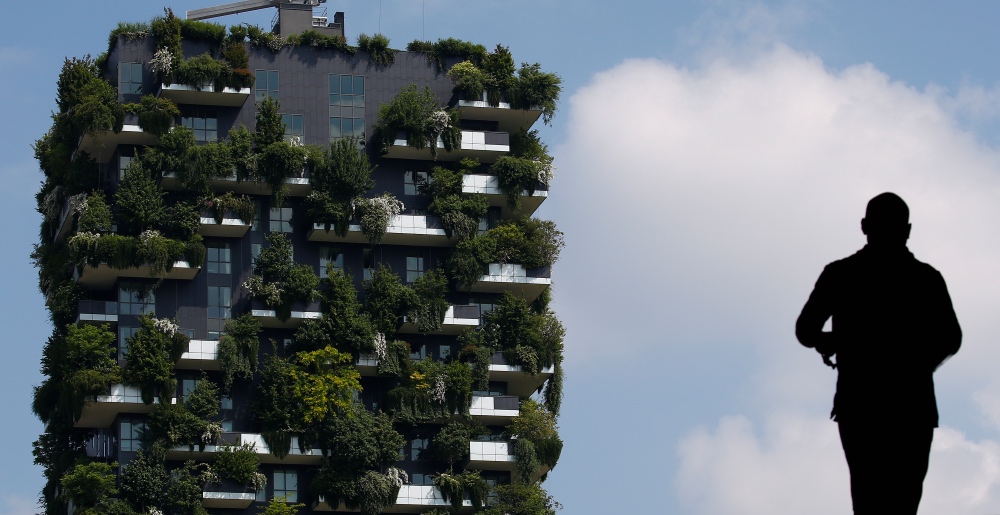Rome
Thomson Reuters Foundation
The United Nations unveiled plans to plant urban forests over an area four times the size of Hong Kong, seeking to make Africa and Asia’s rapidly growing cities greener.
The UN Food and Agriculture Organization said the pace of urbanisation on both continents was contributing to climate change and planting trees could improve air quality, cut the risk of floods and heatwaves and halt land degradation.

The “Bosco Verticale” (Vertical Forest) residential tower in the Porta Nuova district is seen in Milan, Italy, on 18th May, 2018. PICTURE: Reuters/Stefano Rellandini
It will discuss plans to create up to half a million hectares of new urban forests – more than four times the size of Hong Kong – by 2030 in New York this week.
“If you look at the urbanisation data, particularly in some parts of Asia and Africa, it is happening now,” said Simone Borelli, an expert on urban forestry with the FAO.
“For example, Chinese cities are growing very fast and in 20 years’ time, they may have 20 per cent or 30 per cent more people living there.
“Unless they start planting now, they’ll find themselves in a situation where it’s too late. Trees take a long time to grow,” he told the Thomson Reuters Foundation on Monday.
If managed well, urban forests could reduce air temperatures by up to eight degrees Celsius and cut the cost of air conditioning by up to 40 per cent, the FAO said.
The initial plan is to support 90 cities in 30 countries in Africa and Asia to create green areas, said FAO director-general Qu Dongyu in a statement.
The problem is particularly severe in dry areas, where climate change is expected to make cities and surrounding areas more vulnerable to droughts, heatwaves, extreme winds, floods and landslides, he said.
With almost 70 per cent of the world’s population estimated to be living in cities by 2050, mainly in Africa and Asia, environmental impacts of urbanisation could worsen without solutions, experts have warned.
The FAO will work on the project with the UN housing agency, Britain’s Kew Royal Botanic Gardens, and the C40, a global network of cities pushing for climate action.
It is also working with Stefano Boeri Architetti, the firm that designed a “vertical forest” in the Italian city of Milan by incorporating trees equivalent to two hectares of forests in two residential towers.
The architects said the towers helped create a microclimate that would produce humidity, absorb carbon dioxide and dust particles and produce oxygen, calling them a model for sustainable residential building.






